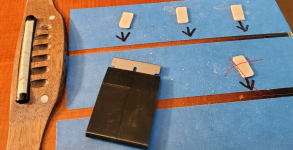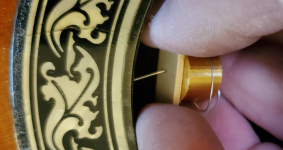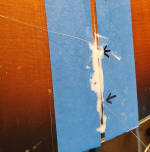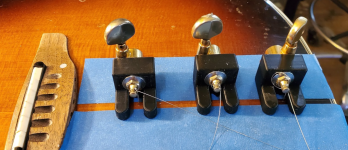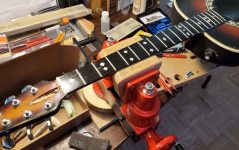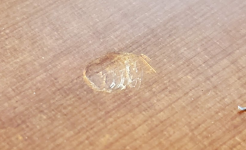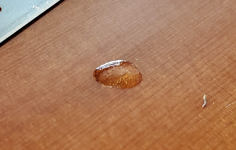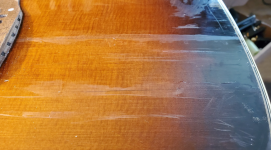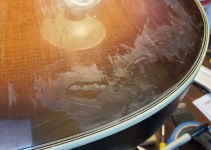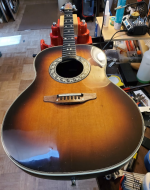- Messages
- 16,585
- Location
- Reno NV
Probably the first brand new instrument I ever bought was my 1979 Ovation Custom Balladeer. I have a lot of great memories with this guitar from using it as one of the instrumentalists in a Singing group in high school and just in general being a part of my life for a long period of time.
It still seems to play well but time and humidity (or lack thereof) has taken it's toll over the years. Ovations of this era are kind of known for having some cracking issues and what not, and this one is no exception. The bridge has pulled the top down a little bit at the front. The neck could use a little attention, the frets need a little dressing.
On the upside, it is still very firmly attached to the bowl, and other than a number of dings and bashes here an there, it's probably not in that bad of shape for something this old.
I'm going to try and do this as low impact as possible. What I'm thinking at this point I'm going to do are:
Starting point.

Cracks

Ovations start out as true flat tops, I.e. no arch or dish at all on the frong, but over time the tension on the bridge can cause the top to 'sink' in a bit.


It still seems to play well but time and humidity (or lack thereof) has taken it's toll over the years. Ovations of this era are kind of known for having some cracking issues and what not, and this one is no exception. The bridge has pulled the top down a little bit at the front. The neck could use a little attention, the frets need a little dressing.
On the upside, it is still very firmly attached to the bowl, and other than a number of dings and bashes here an there, it's probably not in that bad of shape for something this old.
I'm going to try and do this as low impact as possible. What I'm thinking at this point I'm going to do are:
- Do a little aggressive re-hydration
- Do some repairs on the cracks
Glue some patches on the inside to level and keep the cracks from getting worse
Fill in the cracks - Dress and flatten the frets
- Do a little ding filling and polishing
- Replace the Nut and fit it with a lighter gauge of strings. Going to to with .10's on this to reduce the tension a bit.
- Adjust the truss and set the action
Starting point.

Cracks

Ovations start out as true flat tops, I.e. no arch or dish at all on the frong, but over time the tension on the bridge can cause the top to 'sink' in a bit.



